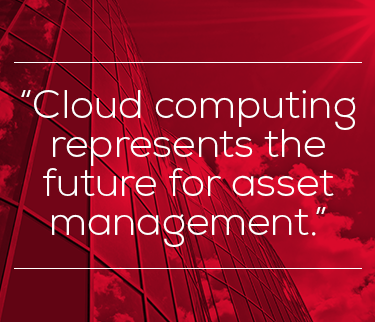 Asset managers are facing a perfect storm. A combination of mounting regulatory pressure, the shift to low capital market returns and increasing competition have left margins looking wafer thin.
Asset managers are facing a perfect storm. A combination of mounting regulatory pressure, the shift to low capital market returns and increasing competition have left margins looking wafer thin.
And as investors turn to low-cost passive fund management in their droves, many asset managers feel compelled to invest in new strategies and markets in order to protect their businesses.
Against this backdrop, the asset management sector can ill afford to spare precious resources: when it comes to allocating time and money, the priorities need to be value-enhancing activities rather than operational demands or support services. Why, then, are so many asset managers persisting with traditional approaches to IT that require extensive on-premise infrastructure and consume resources? While other industries have shifted to a cloud-based model across their businesses, asset managers, in common with too many parts of the financial services sector, have often been much more cautious.
The explanation largely seems to be nervousness about the potential regulatory exposures that working with third-party cloud providers might bring. However, the Financial Conduct Authority made it absolutely clear last year that it sees no reason why asset managers and other firms should not shift to a cloud model, as long as they comply with its rules.
{{cta(‘bcdd0f82-15ab-4a31-97d7-953aaeb085d7’)}}
The arguments for asset managers making that shift are compelling. Above all, a move away from on-premise infrastructure to a cloud-based solution based on sourcing software-as-as-service (SaaS) represents a huge opportunity to refocus the IT team around the asset manager’s core business.
To see why, consider six crucial advantages that the cloud model offers over on-premise deployment:
1. Cost
Cloud-based software runs through your browser. There are no specific IT infrastructure requirements. This includes disaster recovery environments and means drastically reduced costs versus on-premise software. The cost profile and models of many SaaS based solutions are also more transparent. All the costs of the application can be easily seen and understood versus hidden IT costs of local systems.
2. Implementation
With no investment in hardware typically required, and no need to strip out and replace the asset manager’s legacy IT equipment, cloud-based solutions are almost always quicker and simpler to implement than an on-premise system. Asset managers can focus on the business and data implementation rather than the IT procurement and installation.
3. Scalability
As an asset manager grows, so the IT demands on the business increase; a cloud-based solution can grow with the manager (or shrink if needs be), with new users added when needed, or new modules supplied as the business changes. True cloud solutions are elastic and enormously scalable within minutes. Local IT systems simply cannot compete with this level of flexibility.
4. Adaptability
On-premise IT systems date rapidly and sometimes only have annual updates, leaving asset managers with the uncomfortable choice of whether to try to manage their businesses on processes designed for a different time or to invest in an expensive replacement. Cloud-based solutions, by contrast, can be continuously updated by the provider.
5. Customization
Local on-premise systems often have workarounds added that include custom code for specific tasks (that may not be supported in the system itself). These customizations are expensive to maintain and increase operational risk. They are often poorly documented and cannot be globally supported. Cloud-based systems should offer flexible and extensive configuration options that don’t require local customizations. Good cloud services also offer Web APIs so data can be extracted and worked on locally if required.
6. Security
While issues such as data security, cyber risk, resilience and business continuity have often been the reasons for asset managers’ reservations about the move to cloud, the reality is that outsourcing some of these responsibilities to an expert and experienced vendor should improve risk management rather than detract from it.
“Our industry has been predictably slow in adopting the cloud and entrusting critical IT services to third-party providers,” warns the business consultant Citisoft. But the imperative for accelerating the pace of the shift to cloud is accelerating by the day. In each of the areas outlined above, asset managers that stick with on-premise infrastructure and solutions risk burdening their businesses with resource-hungry systems and processes.
At a time when cloud-based providers have worked hard to develop SaaS models tailored to the requirements of the asset management sector, those burdens are now unnecessary. And given the huge margin pressures, they are burdens that firms can no longer afford to bear.
As asset management develops, moreover, the argument for making the leap becomes ever stronger. Research from State Street suggests asset managers see two huge strategic trends as likely to dominate in the coming years: the shift to greater dependence on data and analytics, and increasing client demand for solution-based product offerings that require a multi-asset approach to fund management.
Both these trends will add to the pressure on IT. Asset managers opting for on-premise solutions will need to develop expensive data centers alongside their existing infrastructure, and to ensure their capabilities extend to an ever-increasing range of asset classes and markets. In both regards, a shift to a cloud model makes much more sense.
Cloud computing, in other words, represents the future for asset management. Those firms that make the shift quickest will free up IT resources that can then be devoted to the core business – and therefore secure a potential competitive advantage over slower rivals.
Takeaways:
- Cloud-based software hosted on externally managed hardware and accessed through a web browser
- With asset managers’ margins under pressure, cloud-based solutions are much more cost effective than on-premises IT infrastructure
- Cloud-based solutions offer advantages including scalability, adaptability, configurability and enhanced security
- As asset managers seek to invest in more advanced data analytics and respond to client demands, cloud-based IT solutions free up resources for the core business
